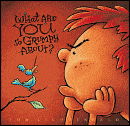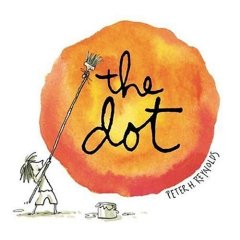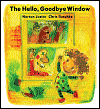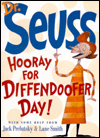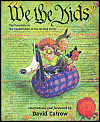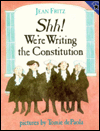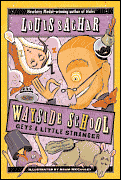Teaching our students to be discerning consumers of media has been a hot topic among educators this summer. Here are some interesting links to ponder as you prepare your students for research in the upcoming school year…..
One of my favorite blogs on my
Bloglines account is from a math educator in Canada. (Yes, I said MATH!) In addition to the
GREAT stuff he has done with his students, a recent post about
South African wikis really caught my eye. Apparently, many experienced educators have been pointing to South Africa as a leader in using technology as their national curriculum was posted in a
wiki. Alas – upon further investigation, and discussion with South African educators who were surprised by this information, it was discovered that this information might not be true!! Even more helpful are the comments to the posting which refer to how this site might be used for educational purposes.
Donna R., one of my favorite 5th grade teachers, shared
this website with me that she plans to use with her students before embarking on a library research project using the Internet. While the site looks very professional – complete with maps and news articles referenced in the sidebars – the very bottom promotes an organization called “People for the Ethical Treatment of Pumpkins.” What a great site to visit and apply those critical thinking skills!!
If are thinking about using blogs in your classroom, the
Cool Cat Teacher has a great posting on making comments.
Point #6 about teaching commenting really hits home when you read the words of a third grade blogger. And of course,
#7 on the power of words hits close to home for me!!
A recent find for me (from reading waaaay too many blogs!!) highlights a super piece of
student writing. It has made me ponder ways in which I might be able to incorporate authentic student voices into my blog as well. (
HINT! Send me your excerpts to share! We are all about improving student writing after all!)
Finally,
Will Richardson has an excellent and thought provoking blog on the use of technology in education. If you don’t have your copy of
Blogs, Wikis, and Podcasts – run, don’t walk, to the nearest bookstore (real or virtual) to get your copy. Even if you don’t think this is the way of the future – you have to have read about it to engage in conversation about it. Will’s most recent blog links to some “light” reading on
“Obstacles to Educational Uses of Copyrighted Material in the Digital Age.” I’ve only skimmed the table of contents and the case studies seem to be something that every educator should read – especially social studies teachers!!
And of course, my posting would not be complete without some reference to mentor texts!! These
two teachers are doing a pretty powerful job in sharing their own learning through literature in their quest to have read the Newbury Award winner – not to select it, but to have read it before selection. They have also started a pretty interesting list of the 100 Cool Teachers in Children’s Literature. They are only up to 58 so it’s not too late to weigh in!! Besides being a great resource blog – can we say awesome professional development?
Phew!! This ought to be enough to get any newbie started and lost in the world of weblogs and wikis!! I have just begun the journey myself and what an interesting ride!! Please share some of your “highlights” here as well!
